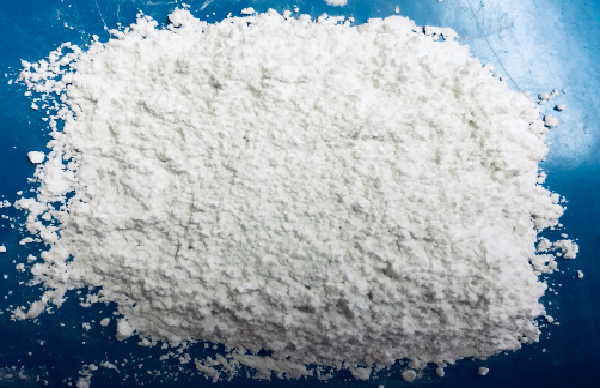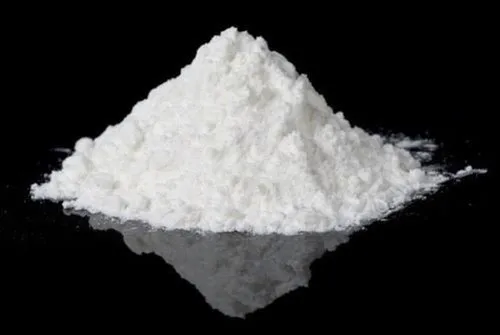
What Industries Use Soda Ash Dense Most?
September 16, 2024
Discover the Versatile Uses of This Soft Mineral Powder
September 25, 2024Soapstone and talc powder are often mentioned together because they are both composed primarily of the mineral talc, but they serve very different purposes and are used in distinct industries. Understanding the differences between these two materials is crucial for making informed decisions about their use in manufacturing, art, or other applications. In this article, we'll delve into what differentiates soapstone and talc powder and how each is utilized, particularly within industries like those served by Sudarshan Group, a company known for supplying high-quality industrial minerals.
What is Soapstone?
Soapstone is a naturally occurring metamorphic rock, primarily composed of talc, along with other minerals like chlorite, magnesite, and amphiboles. Its high talc content gives it a smooth, soap-like texture, which is where its name comes from. Soapstone can be found in shades ranging from light gray to dark green, and its visual and physical characteristics make it popular in both industrial and artistic applications.
Uses of Soapstone
- Countertops and Tiles : Soapstone is a popular material for kitchen countertops, sinks, and bathroom tiles due to its heat resistance, non-porosity, and durability. Unlike granite or marble, it doesn't require sealing, which makes it a low-maintenance option for many households.
- Sculpture : Artists have used soapstone for centuries in carvings and sculptures. Its softness makes it relatively easy to shape, and its aesthetic qualities give finished products a unique appearance.
- Industrial Applications : In industries, soapstone is used in the production of various materials, including ceramic and paint, due to its resistance to heat and acids.
- Laboratory and Industrial Use : Soapstone's high heat resistance makes it ideal for use in laboratory countertops and as insulation in certain industrial environments.
What is Talc Powder?
Talc powder, also known as talcum powder, is a finely ground form of talc, the softest mineral on Earth. Unlike soapstone, which is a whole rock, talc powder is derived purely from the mineral itself and has many industrial, cosmetic, and pharmaceutical applications. Talc is chemically inert and highly absorbent, which contributes to its versatility.
Uses of Talc Powder
- Countertops and Tiles :Talc powder is a key ingredient in many cosmetic products, such as baby powder, face powders, and deodorants, due to its absorbent and anti-caking properties. It absorbs moisture and provides a silky texture to products, making it ideal for use on the skin.
- Pharmaceuticals: Talc powder is used as a filler in various pharmaceutical products, including tablets and pills, where it acts as a carrier for active ingredients. Its inert nature ensures that it doesn't interact with other substances.
- Industrial Applications : Talc powder is used in plastics, ceramics, paints, and coatings. In plastics, it serves as a filler to enhance the strength and rigidity of products. In paints and coatings, talc improves the opacity and durability of the final product.
- Paper Industry : Talc is used in the paper-making process as a filler and coating material. It improves the smoothness and brightness of the paper while also enhancing its printability.
Key Differences Between Soapstone powder and Talc Powder?
While both soapstone and talc powder share a common ingredient—talc—they are distinct materials with different characteristics and applications.
1. Composition:
- Soapstone is a natural rock composed mainly of talc but also includes other minerals such as chlorite and magnesite.
- Talc powder is derived purely from the talc mineral and is free of additional components found in soapstone.
2 Physical Form :
- Soapstone is a solid, durable rock that can be shaped and polished for use in sculptures, countertops, and industrial applications.
- Soapstone is a solid, durable rock that can be shaped and polished for use in sculptures, countertops, and industrial applications.
3. Applications :
- Soapstone is often used in larger, more permanent structures like countertops, tiles, and sculptures.
- Talc powder is used for more delicate, absorbent, and inert applications like cosmetics, pharmaceuticals, and industrial fillers.
4. Heat Resistance :
- Soapstone is highly heat-resistant, making it suitable for applications in kitchens and laboratories.
- Talc powder, while chemically inert and heat-resistant to some extent, is more commonly used for its absorbent qualities.
5. Processing :
- Soapstone is mined as a rock and can be cut and polished.
- Talc powder is a result of crushing and processing talc into a fine powder.
Conclusion
Soapstone and talc powder, though both primarily composed of talc, have significantly different applications and properties. Soapstone is a durable, versatile rock used for artistic and structural purposes, while talc powder is a soft, absorbent material widely used in cosmetics, pharmaceuticals, and various industries. At Sudarshan Group, the focus is on delivering high-quality talc products tailored to different industrial and commercial needs. By understanding the specific uses and benefits of these materials, customers can make informed choices that best suit their project or application.



